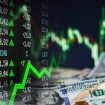
Understanding Economic Indicators: Essential Knowledge for Active Traders
Economic indicators are crucial tools for active traders, providing invaluable insights into the overall health of the economy and potential market trends. Their significance cannot be underestimated as they play a pivotal role in shaping financial policy and influencing investment decisions.
In this post, we’ll delve into the world of economic indicators and explore their importance in the realm of active trading. Our key goal is to aid you in comprehensively understanding these vital instruments, thereby helping you make more enlightened and profitable transactions in the financial markets.
The Importance of Economic Indicators
An economic indicator is a statistic about an economic activity that provides insights into the current and future health of a nation’s economy. They can be classified as leading, coinciding or lagging indicators, depending on their timing relative to economic cycles.
-
Leading indicators are forward-looking and change before the economy begins to follow a particular pattern or trend. They are used to forecast short- to medium-term economic activity. Examples include yield curves, stock market returns, and building permits.
-
Coinciding indicators change at the same time as the economy or the market. They provide information about the current state of the economy. Examples include GDP, industrial production, and personal income.
-
Lagging indicators change after the economy or the market. They are useful for confirming long-term trends once they’ve occurred. Examples include unemployment, corporate profits, and labor costs.
Understanding these indicators can boost the effectiveness of your trading strategy by providing information about economic conditions and potential market shifts.
Key Economic Indicators in Active Trading
Several economic indicators are considered vital to active traders.
-
Non-farm Payrolls released by the Bureau of Labor Statistics is one of the most critical employment indicators. It manifests the change in the number of people employed during the previous month, excluding the farming sector.
-
Consumer Price Index (CPI) and Producer Price Index (PPI) assess changes in the price level of consumer goods and services and the selling price received by domestic producers for their output, respectively. Movements in these indices can indicate inflationary trends.
-
Gross Domestic Product (GDP) is the monetary value of all finished goods and services made within a country during a specific period. It gives an overall picture of the economic health of a country.
-
Federal Funds Rate set by the Federal Reserve influences all other interest rates. Any fluctuation in this rate can impact stocks, bonds, and currencies.
Implementing Economic Indicators in Trading Strategies
As a trader, the use of economic indicators should not be confined to merely knowing and understanding them. The real value lies in incorporating them into your trading strategies to anticipate market movements and make sound investment decisions. Keep a close eye on economic calendars for major releases, and adjust your trading plan accordingly to safeguard your investments and potentially enlarge your profits.
Conclusion
In conclusion, economic indicators are powerful instruments for active traders which can help them apprehend the current state and future trends of the market. Understanding and utilizing these indicators in your trading strategies will only accentuate your trading prowess and provide you with a competitive edge.
Remember, knowledge is power – and in the world of trading, this power translates into potential profits. By understanding economic indicators, you can be one step ahead in the game of trading.
As guidance for all active traders, mastery of economic indicators is not an option; rather, it is a necessity. With this knowledge, you’ll be well-equipped to maximize your trading success in the dynamic, fast-paced world of financial markets.










